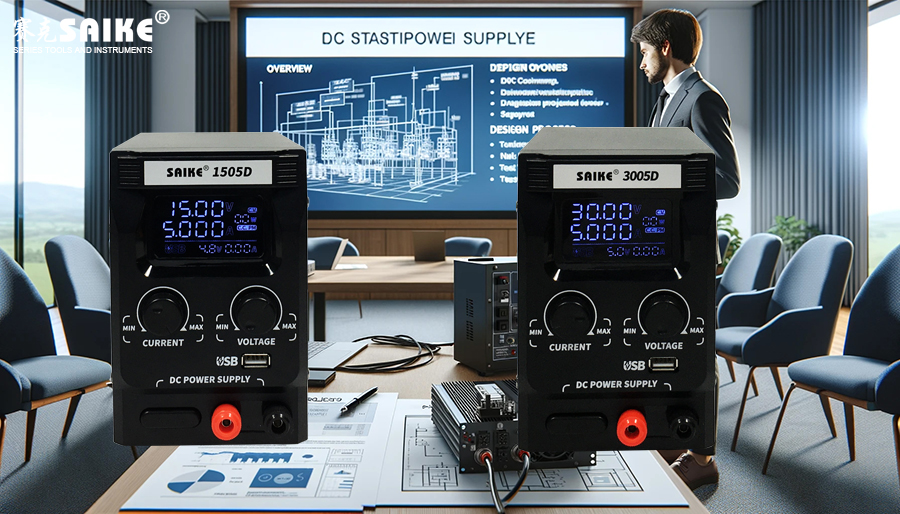
SK-YJ000ZLWYDY-KP 100035
In the power supply design of electronic equipment, short-circuit protection and temperature protection are crucial safety features. They ensure that in the event of a fault or abnormal condition, the power supply can reliably cut off or regulate the output, protecting both the power supply itself and the loaded equipment from damage. This article will delve into the mechanisms of short-circuit protection and temperature protection in DC stabilized power supplies.
I. Short-Circuit Protection
Short-circuit protection is a safety mechanism designed to prevent damage to the power supply or loaded equipment caused by output short-circuits. During a short-circuit, the current increases sharply, which, if not addressed promptly, could lead to severe damage to electronic components or even cause a fire.
1.Working Principle:
– Short-circuit protection is typically achieved by embedding current sensors into the power supply output. These sensors continuously monitor the current flowing through the power supply.
– When the detected current exceeds a preset safe threshold, the protection circuit immediately activates, disconnecting the power supply output or limiting it to a safe range.
2.Implementation Methods:
– Electronic Circuit Breakers: Utilize semiconductor switches, such as transistors, to quickly cut off the power supply output.
– Self-Recovering Fuses: These are used in circuits and can automatically reconnect the circuit once conditions return to normal.
II. Temperature Protection
Temperature protection mechanisms are designed to prevent power supply damage due to overheating. Overheating can be caused by internal faults, overloads, or excessively high ambient temperatures.
1.Working Principle:
– Temperature protection relies on temperature sensors, such as thermistors or thermocouples, to monitor the internal temperature of the power supply or its key components.
– If the temperature surpasses a set limit, the protection mechanism is triggered. Typically, this involves reducing the output power or completely shutting down the power supply.
2.Implementation Methods:
– Active Cooling: Utilize fans or other cooling devices to actively lower the temperature.
– Passive Protection: Employ thermal breakers or thermal fuses that automatically disconnect the circuit when a critical temperature is reached.
III. Design and Implementation Considerations
1.Rapid Response and Recovery:
– Short-circuit and temperature protection systems should be designed for quick responses to prevent damage and allow the system to resume normal operation after the issue is resolved.
2.Accuracy and Reliability:
– The sensors in the protection system should exhibit high accuracy and reliability, ensuring that the protection mechanisms are only activated in genuine fault situations.
3.Synergy with Other Protection Functions:
– Short-circuit and temperature protections should be integrated with other protective features like overvoltage and overcurrent protections, forming a comprehensive protection strategy to guarantee the stability and safety of the power supply system.
IV. Conclusion
Short-circuit protection and temperature protection play pivotal roles in the design of DC stabilized power supplies. They not only safeguard the power supply itself but also ensure the safe operation of the loaded equipment. By integrating efficient sensing and control technologies, the safety and reliability of the power supply can be significantly enhanced. Power supply designers should consider the combined effects of these protection mechanisms to guarantee stable and safe output under all circumstances.


